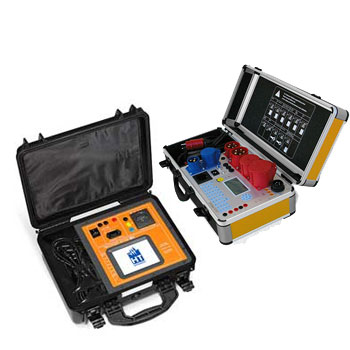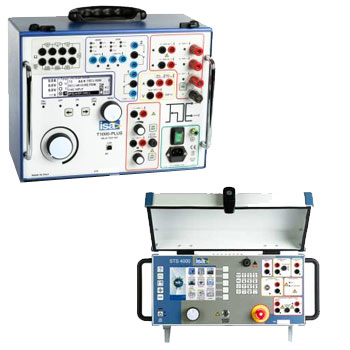- ORIGINAL MINIMESS® TEST POINTS
- ORIGINAL MINIMESS® TEST POINTS – SPECIAL SERIES
- ORIGINAL MINIMESS® GAS CHARGING VALVES AND ACCESSORIES
- ADAPTERS WITH ORIGINAL MINIMESS® TEST POINTS
- MINIMESS® GAUGE AND SENSOR ADAPTERS, HOSE LINES, AND ACCESSORIES
- EXPANDED MINIMESS® PORTFOLIO
 Catalog Catalog
|

Minimess® HT – high-temperature couplings & microbore hoses for service, measurement & flushing
Minimess® HT (High Temperature) extends the Minimess® concept with heat-resistant components for measurement, venting and filling on hot-running hydraulics, thermal oil systems, test benches and process plants. HT parts are designed for under-pressure coupling with drip-free handling and withstand elevated medium and ambient temperatures.
Depending on series: working pressure up to 630 bar (DN2) or up to 400 bar (DN4), temperature ranges typically −30…+150 °C, HT versions up to +200 °C (short-term higher; see datasheet), bodies in 316/316L stainless steel or zinc–nickel steel, seals in FKM/FFKM/PTFE, HT hose builds with PTFE liner and metal braid, plus thermal protection such as insulation sleeves, guard springs and heat shields.
ICS Schneider Messtechnik configures HT couplings, hoses, adapters and protective accessories to match your medium, temperature and installation—complete with calibration and documentation.
FAQ on Minimess® HT
Answers on temperature limits, sealing, hose construction, handling of hot media, installation, safety and best practices.
What is Minimess® HT designed for?
For service/measurement tasks on thermal-oil circuits, heavily loaded hydraulics, test benches and process loops with elevated ambient temperatures—focused on temperature resistance and minimal spillage during coupling.
What pressure and temperature ranges apply?
Typically up to 630 bar (DN2) or 400 bar (DN4). Depending on the HT series up to +200 °C, short-term higher. Observe derating: allowable pressure decreases as temperature rises (see datasheet).
Which sealing materials make sense for high temperature?
| Seal | Temperature | Properties | Typical use |
|---|---|---|---|
| FKM (Viton®) | to ~+200 °C | Excellent oil/fuel resistance | Hydraulics, thermal oils |
| FFKM | to ~+260 °C | Maximum chemical/heat resistance | Process/aggressive media |
| PTFE | to ~+200 °C | Very broad chemical resistance; some cold flow | Hot, aggressive media |
Which media are suitable?
Hydraulic oils (mineral/synthetic), thermal oils, water–glycol (observe temperature), fuels, inert gases. For HFD fluids/ester blends select suitable seals (e.g., FFKM/PTFE).
How do HT hoses differ from standard hoses?
HT hoses typically use a PTFE liner with stainless braid and optional heat-protection sheaths/insulation sleeves. This enables higher temperature capability and low permeation with hot media.
DN2 or DN4 for HT applications?
DN2 offers higher pressure ratings, smallest internal volume and best dynamics; DN4 is more robust for longer runs and slightly higher flows. For very hot media prefer short DN2 lines (less heat load, faster response).
Which end connections are available?
7/16″-20 UNF (classic Minimess® hose end), M16×2, M16×1.5, M12×1.5, G 1/4 (BSPP), NPT; instrument adapters for gauges, transmitters and loggers.
What should I consider when coupling at high temperature?
- Wear thermal PPE (gloves/sleeves); use insulated coupling sleeves if available.
- Reduce pressure spikes before coupling, align axially and push until the audible/tactile click confirms engagement.
- After disconnecting, shield hot ends to avoid burns.
Are there special installation notes for HT components?
- Observe manufacturer derating curves (pressure vs. temperature).
- Respect the minimum bend radius when hot (thermal relaxation).
- Protect exposed sections with heat shields (fabric sleeves, reflective wraps).
How does temperature affect measurement behavior?
Higher temperature lowers viscosity → faster pressure propagation; at the same time thermal expansion and potential seal creep increase. Keep hoses short and avoid air entrapment.
What IP/EMC aspects matter in hot areas?
Use IP-rated connection boxes suitable for HT and route shielded cables; keep distance from hot conductive surfaces to reduce EMC coupling.
Can I vent and take samples with Minimess® HT?
Yes—versions with an integrated needle/drain allow controlled venting and sampling. For hot media always use thermal protection and appropriate containers.
Which protective options do you recommend?
- Insulation sleeves for couplings and hose ends
- Heat-protection fabric or reflective wrap along hot runs
- Guard spring/metal braid for abrasion/kink protection
Typical HT failure modes and remedies
- Seal set/flattening → choose FKM/FFKM, retighten after heat soak, replace seal.
- Hose kinking when hot → increase bend radius, add guard spring.
- Leak after thermal cycles → clean joint, verify torque, renew seal.
What documentation can be provided?
EN 10204 material certificates, pressure/leak test records, temperature derating tables, and factory/DAkkS calibration certificates for the measuring chain.
Do you support selection, custom assembly & commissioning?
Yes—we define seal/material, specify DN/length, select thermal protection, build custom HT lines and support commissioning and documentation.











































































































































































